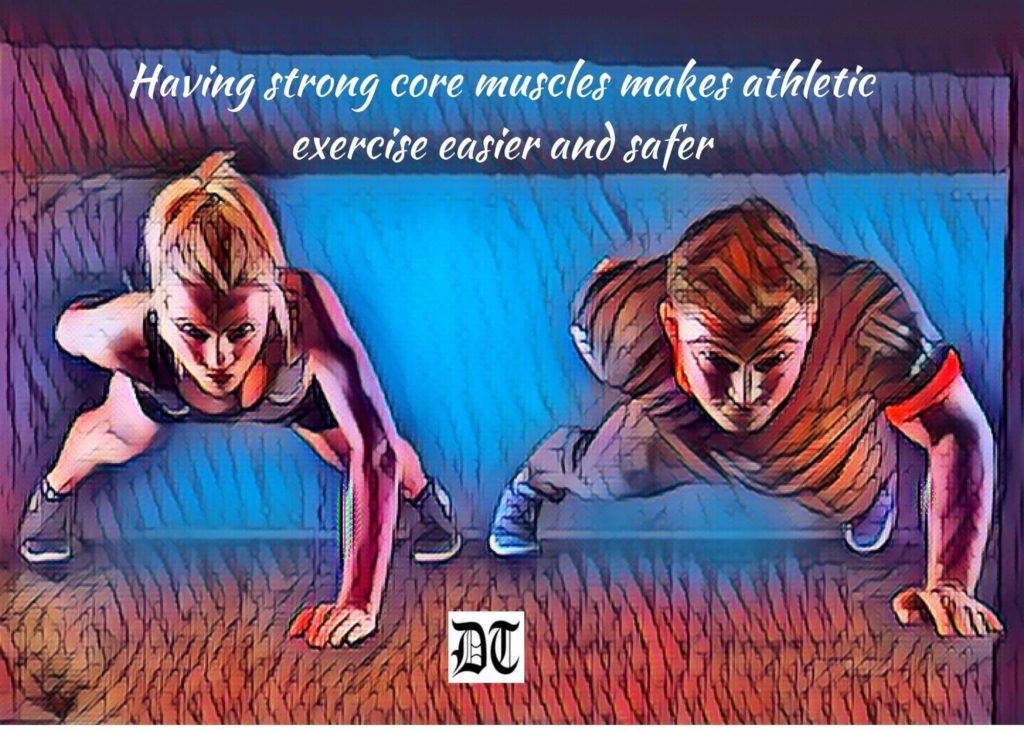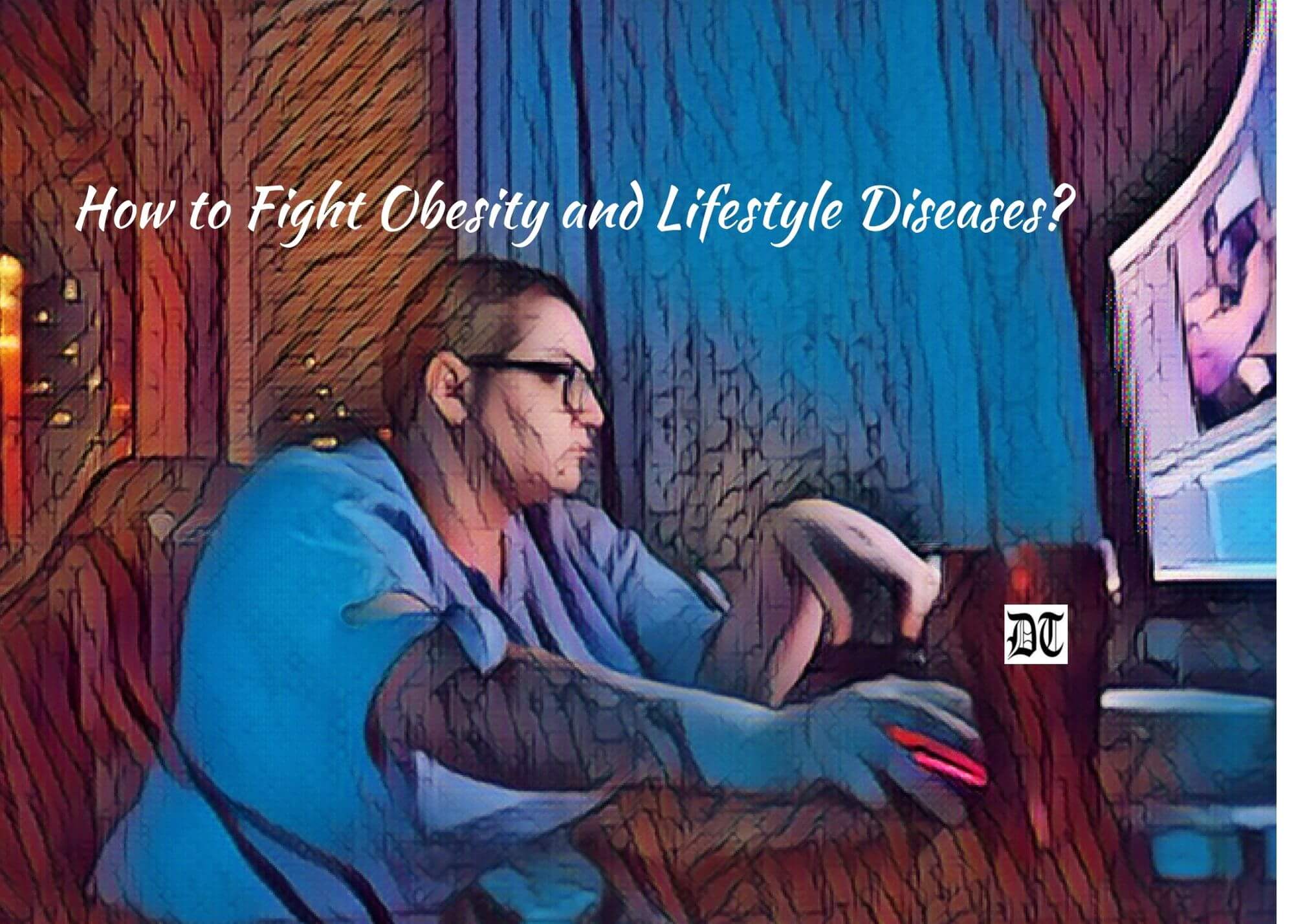Obesity is the bane of the tech savvy and the now generation. It is a silent killer as it invites many diseases. Here’s what the doctor prescribes to remain healthy, fit and happy. Dr. Tejal is one of our Agony Aunts. She will reply queries regarding regarding health problems.

Today, with an astounding number of reports about increasing obesity rates, diseases and conditions related to being overweight and out-of-shape, it is impossible to ignore the importance of fitness and well-being in our lives. Health professionals attribute cancer, diabetes and mental issues such as depression to deficiencies in fitness and well-being.
While concentrating on exercise and diet can help people suffering from these diseases, you shouldn’t wait until you develop an illness to begin a health and fitness routine. Recent studies have identified as many as 75 per cent of adults as overweight or obese. Only about 24 per cent of adults participate in vigorous physical and/or leisure activities three or more times a week.
Obese people have a 10 to 50 per cent increase in premature deaths from all causes compared to individuals with a healthy body weight. The majority of these premature deaths are attributed to cardiovascular causes. However, diabetes rates are climbing in parallel with these obesity statistics. The five years between 1997 and 2002 saw a 27 per cent increase in the number of diabetes cases. In addition, while diabetes is affecting more and more individuals, it is also affecting individuals at a younger age as well.
With the constant threat of numerous health issues caused by obesity, it is obvious that everyone should be conscious of their personal fitness and mental well-being. The only way to achieve a healthy and fit lifestyle is to make the necessary changes to your everyday life. These changes do not have to be drastic to begin with, and should be things you enjoy and look forward to doing. The most important thing is to make an effort at improving all areas of your personal fitness and well-being, even if changes are gradual. Aerobic exercise has many benefits. In combination with a healthy diet, it helps you lose weight and keep it off.
Cardiovascular/Aerobic Conditioning: Beneficial aerobic activities are defined as exercises that raise your heart rate to your target heart rate and maintain that level for a minimum of 20 minutes. While the most important aspect of aerobic exercise is sustained cardiovascular activity, there is an optimal heart level you should target. For a cardiovascular workout, 70–85 per cent of your maximum heart rate is the ideal range. Your maximum heart rate will depend on your age. You can easily find this number and pick your target heart rate based on your fitness level.
Strength Training and Muscular Development: Strength training is a musculoskeletal exercise type that progressively increases the resistance muscles can overcome. Over time, this enlarges and strengthens the muscle themselves. Strength training improves your health in several ways. More muscle mass increases your metabolism, helping you burn more calories. This makes it easier to control your weight. Stronger muscles reduce the risk of injury during daily activities or other exercise. A person loses half a pound of muscle every year after age 20, if not actively training. This rate of loss doubles after the age of 60. If you are not actively working on muscular development, you are losing the benefits associated with your metabolism and increasing the risk of injury due to strain and over-exertion.
Stretching – Muscles, Ligaments and Tendons: Stretching is another important component of your fitness and well-being. Stretching should be done along with weight training or aerobic exercise at least three times a week. In addition, stretching should be done when muscles, tendons and ligaments are properly warmed up. This means it is best to stretch just after a brief physical warm-up routine. You should hold each stretch for a minimum of 30 seconds and extend to the point of tension, but stop before pain. Stretching works by increasing the muscles’, ligaments’ and tendons’ ability to elongate. By taking the time to stretch, and hence elongate your soft tissue, you can increase your flexibility. Flexibility and the elongation of your body’s soft tissue will also improve blood circulation. This, in turn, will keep your muscles, ligaments and tendons supplied with oxygen so that they are able to recover more quickly from workouts or injury. Finally, stretching can relieve stress by relaxing the tense muscles that often accompany mental tension.
Core Stability: Core stabilisation involves strengthening the muscles that line your spine and make up your abdomen and pelvic floor. These muscles help control your posture, balance and the power and efficiency with which you move. Since it is so important to posture and balance, many of the best exercises for core stability involve maintaining body positions. More specifically, core strengthening typically involves placing the body in a position where the core muscles are required for the body to maintain that position for a certain time interval. Having strong core muscles makes athletic exercise easier and safer.
Nutrition and Supplementation: The importance of providing our bodies with the proper nutrition cannot be overstated. Simply put, the human body requires the appropriate balance of vitamins, minerals, carbohydrates, proteins and fat on a daily basis to function optimally and disease-free. In other words, we are what we eat. The food we consume, as stated by Hippocrates, “is our medicine.”Several medical professionals believe that virtually every illness is based on some form of nutritional deficiency. When the human body is consistently deprived of one or more nutrients, the human body breaks down and is more susceptible to contracting a disease or, at a lesser level, a group of unhealthy symptoms (i.e. fatigue, muscle soreness, indigestion, etc.). Consuming the appropriate nutritional foods facilitates the human body’s ability to strengthen its immune system, hence allowing the body to perform optimally, free of disease, and at an increased level of energy. Finally, by allowing the human body to heal itself through a healthy, nutritious and fit lifestyle, the body will operate at a level that does not require the continuous use of medical drugs.
Mental Rest and Relaxation: The human body cannot achieve an optimum level of health and fitness without the mind being of a centered and balanced nature. As mental rest and relaxation is one of the seven key components of good health and fitness, it is important that you become familiar with the approaches and techniques associated with balancing the mind. Yoga, meditation and many more modalities help a lot here.
Sleep: Sleep is necessary for your overall health, fitness and mental well-being. Experts recommend eight hours of sleep to obtain the maximum benefits, which are many. Lack of sleep has been proven to lower the efficiency of your immune system. It has also been implicated in contributing to heart disease and Type 2 diabetes. Recent studies suggest that not getting enough sleep can prevent people from losing weight.Sleep also gives your brain time to sort out the information it has collected during the day. This reduces confusion, improves memory and makes you more alert. Sleep also positively affects coordination and appearance.
The seven key physical components to overall good health, fitness and mental well-being are:
These seven key components are associated with the physical and mental aspects of health, fitness and mental well-being. Each contributes to overall health and fitness in its own way. To achieve total physical health and fitness, you must be aware of and work at achieving each of the seven key components.
Visuals by Different Truths





 By
By

 By
By
 By
By
Very Well written teju keep it up